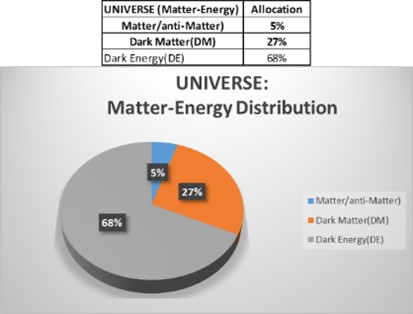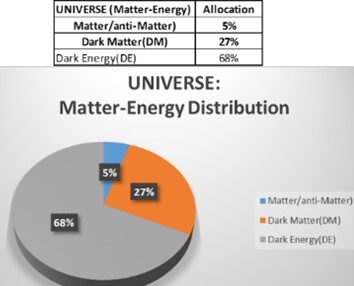INTRODUCING EUCLID – Updating the Post of: DE, DM, M & AM
Euclid mission is designed to explore the composition and evolution of the dark Universe. Astrophysicist Carole Mundell, the European Space Agency’s director of science, called Euclid a “dark detective.” Euclid is the name of a space telescope (a European satellite) launched in 2023, promising more precise gravitational lensing (GW) data to acquire.
Over its six-year mission, Euclid will observe 1.5 billion galaxies, offering unprecedented insights into the Universe’s history and allowing scientists to test Einstein’s equations more rigorously. Using the data from Euclid, the scientific community is poised to refine its understanding of gravity and cosmic expansion. These efforts may ultimately reshape our perception of the Universe, bringing us closer to solving one of science’s greatest enigmas of dark stuffs of DE & DM (Dark Energy, Dark Matter).
How Euclid Works?
Light traveling toward Earth from faraway galaxies is bent and distorted by normal matter and dark matter in the foreground in an effect called gravitational lensing. It is one of the tools used by Euclid to study how dark matter is distributed. Researchers have been sifting through the Euclid data to identify strong gravitational lenses and so far, have identified about 500 such candidates.
Euclid measures the various shapes and the distribution of galaxies with its high-resolution imaging visible instrument, or VIS, while its near-infrared instrument, or NISP, determines galaxy distances and masses. Euclid eventually is expected to obtain images of more than 1.5 billion galaxies.
Newly released Euclid images hint at the large-scale organization of galaxies in what is known as the cosmic web, essentially the backbone of the universe. In this web, there are concentrations of galaxies with voids of space in between, as if the galaxies were sitting on vast empty bubbles. The cosmic web’s structure offers clues about dark matter and dark energy, according to the researchers.
“Euclid is the best instrument ever built for finding these, because it can take an exceptionally sharp image of wide patches of sky â€Â,“ said University of Toronto astrophysicist Mike Walmsley, one of the Euclid scientists.
Dark matter has baffled physicists for nearly a century, quietly shaping our universe’s unseen framework. Invisible yet influential, it provides the gravity necessary to hold galaxies together, driving their motion and structure. About 85% of all matters in the universe stay hidden, undetectable even with today’s best technology. Frustrating to detect DM, some scientists just declared that ‘there is no existence of Dark Matter at all,’ which I reported in my earlier posting (DE, DM. M & AM – please check). In the 1930s, researchers first noticed abnormalities in how galaxies moved, suggesting something invisible exerted gravitational pull. Decades later, studies of the cosmic microwave background—the lingering radiation from the universe’s birth—confirmed dark matter’s importance in shaping cosmic evolution.

CONCLUSION: The search for dark matter is a central pillar of modern physics, driving advancements in technology and theory. Direct detection experiments, such as those conducted deep underground, continue to push the boundaries of sensitivity, aiming to capture fleeting interactions between dark matter particles and ordinary matter.
REFERENCE:
EU informed about EUCLID’s Detection


Awesome https://is.gd/N1ikS2
Please DONATE to FBSOLARLLC.
FB/Host
Very good https://rb.gy/4gq2o4
Please DONATE to FBSOLARLLC.
FB/Host
Awesome https://rb.gy/4gq2o4
Please DONATE to Fbsolarlc.com
Host/FB
Good https://t.ly/tndaA
Please DONATE to Fbsolarlc.com
Host/FB
Very good https://lc.cx/xjXBQT
Please DONATE for Fbsolarllc.com
FB/Host
Good https://lc.cx/xjXBQT
Please DONATE for Fbsolarllc.com
FB/Host
Awesome https://lc.cx/xjXBQT
Please DONATE for Fbsolarllc.com
FB/Host
Very good https://lc.cx/xjXBQT
Hi,
Please, DONATE some money for Fbsolarllc.com
FB/Host -Fbsolarllc
Good https://lc.cx/xjXBQT
Hi,
Please, DONATE some money for Fbsolarllc.com
FB/Host -Fbsolarllc
Good https://shorturl.at/2breu
Hi,
Please, DONATE some money for Fbsolarllc.com
FB/Host -Fbsolarllc